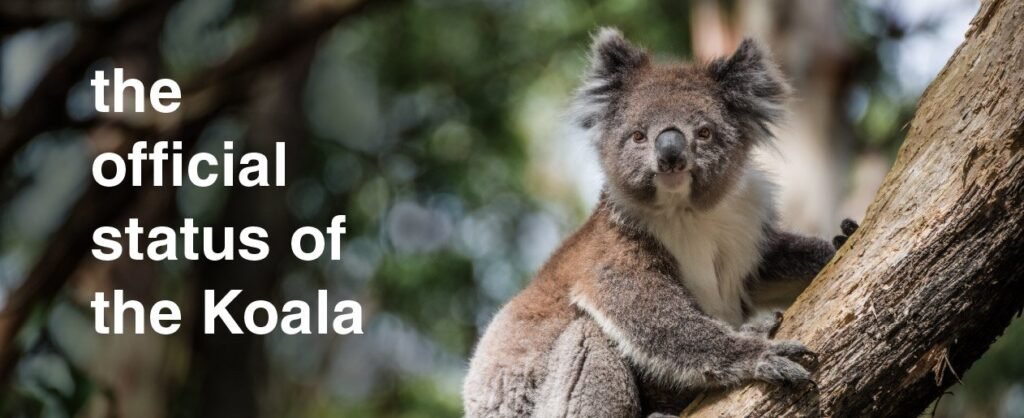It was back in March 2021 when an adorable koala joey named Humphrey became the latest addition to Australia’s biggest zoo in a year after bushfires devastated the population. But after a year, it is unfortunate that the government has declared koalas endangered in some eastern parts of the country including New South Wales, Queensland, and the Australian Capital Territory.
Koalas are the arboreal herbivorous marsupial species that are usually found in Australia. Australian government officials have now officially declared koalas endangered across eastern Australia, largely due to various factors such as the drought and bushfires. Whereas there are some conservation groups that consider this action too little and too late.
Koalas Getting Endangered- A Matter Of Concern

It was announced by the environment minister Sussan Ley on Friday that she is increasing protection for koalas in New South Wales, Queensland, and the Australian Capital Territory by changing their status from vulnerable to endangered. Sussan also claimed that the government will be providing millions of dollars as conservation funding and will also seek states’ consent for a national plan.
Sussan Ley said in the conversation that “Together we can ensure a healthy future for the koala and this decision, along with the total [$53 million U.S.] we have committed to koalas since 2019, will play a key role in that process.”
Experts believe that this move taken by the government has come a decade after koala populations in those regions were stated as vulnerable, meaning the population of koalas in a major risk of extinction. . Now, their endangered status indicates a much more impending risk.
In a parliamentary inquiry that was held in June 2020 it was found that without urgent government intervention, New South Wales’ koalas would become extinct by 2050.
The Koala population has seen a substantial decline in recent years
Koala numbers have fallen fairly in recent years, due to weather events that are climate-driven and rampant land-clearing for agricultural and urban development. Koala populations in Queensland and New South Wales, for example, were recently found to have decreased by 50% or more in the last two decades.
As all of us are aware the deadly bushfires in 2019 and 2020 — which burn millions of acres of forest over several months — further worsen and intensified the decline. As reported by World Wildlife Fund Australia, during the time of bushfire over 60,000 koalas were affected or even killed.
“The bushfires were the final straw,” with statement Josey Sharrad, a campaign manager with the International Fund for Animal Welfare, warned the country that the bushfire was the onset of koalas decline and he also added that “this must be a wake-up call to Australia and the government to move much faster to protect critical habitat from development and land-clearing and seriously address the impacts of climate change.”

According to the Australian Koala Foundation, a heavy loss of around 30% of the population of Koala was seen by the country in the years 2018 to 2021 and the major loss was seen in New South Wales, which saw the decline of over 41% of Koala population.
Besides the bushfires, drought was one major reason for the decline of the Koalas population and drought followed bushfires.
Land clearing can be seen as one of the major factors, land clearing has elevated in recent times which can be noticed with the fact that it has increased 13-fold in New South Wales since the government of Australia’s native vegetation laws in 2016. Conservation and animal welfare groups have always been warning the government to take actions related to these species’ decline.
Back in April 2020, the organization WWF-Australia, the International Fund for Animal Welfare, and Humane Society International together called on the federal government to reestablish koalas as endangered, urging that the move would deploy funds, encourage public support and increase protection for the forests.
The government has also taken initiative and raised some funding for koala protection efforts in recent years. For the Koala monitoring program, the government executed $13 million in 2019 including habitat protection and restoration, health research, and medical support. This year only, the government announced big funding, nearly $36 million toward recovery and conservation initiatives.
Conservation groups welcomed Ley’s announcement but underlined that the status change is not enough for saving the koalas. They emphasized the verdict that afforestation and restoring the forest are also needed. Tabart, with the AKF, called the reclassification “nothing but a token gesture,” saying it was “too little, too late” and calling for meaningful legislative change. The AFK has long advocated for a Koala Protection Act, which would focus on protecting koala trees from developers.
AFK tweeted, “A status change is just a word, it does nothing legally to stop land clearing, which is the key reason for Koalas becoming homeless and then getting sick with disease” related to the concern. It also criticized the governments for not including Victoria and South Australia in the list where Koalas are endangered.
All in all, the decision was taken for the Koala’s protection and it is to be appreciated but many other decisions have to be taken corresponding to it.
